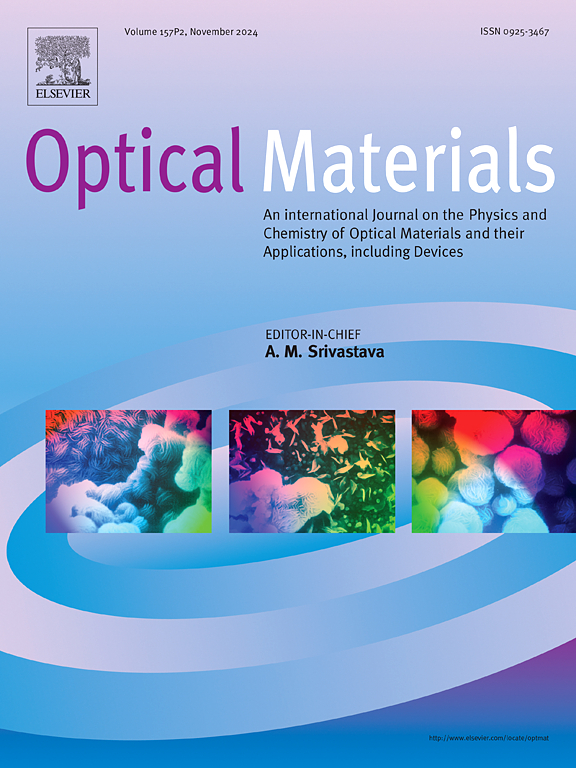A comparative study of sol-gel and electrodeposition methods used in the synthesis of Cu2FeSnS4 thin films
IF 3.8
3区 材料科学
Q2 MATERIALS SCIENCE, MULTIDISCIPLINARY
引用次数: 0
Abstract
This research aims to develop copper iron tin sulfide using two distinct chemical methods, sol-gel and electrodeposition. A comparative analysis is performed to evaluate and contrast the results obtained from each method. The X-ray Diffraction results indicate that all films exhibit a preferential orientation along the (112) plane, approving the presence of the tetragonal stannite phase with space group I-42m for both fabrication techniques. Raman Spectroscopy confirms the phase identified by X-ray Diffraction. Scanning Electron Microscopy showed a uniformed and dense surface. Energy Dispersive Spectroscopy confirmed the presence of all elements present in the structure. The optical analysis for both fabrication methods confirms that the thin films exhibit absorption coefficients greater than 104 cm−1 and band gap energies of 1.43 eV and 1.5 eV for the electrodeposition and sol-gel techniques respectively, which are indicative of good light absorption characteristics. Hall Effect measurements revealed a p-type conductivity in CFTS thin films prepared by the sol-gel method, with a carrier concentration of 3.85 1016, an electrical mobility of 1.42 10−2 cm2/V.s, and a sheet resistivity of 3.31 Ω cm. The simulation of the efficiency of solar cells based on CFTS absorbers prepared by both methods was performed using the SCAPS-1D simulator, and theoretical J-V characteristics were generated. Overall, this research establishes the effectiveness of this thin films as viable absorbers in solar cells.
求助全文
约1分钟内获得全文
求助全文
来源期刊

Optical Materials
工程技术-材料科学:综合
CiteScore
6.60
自引率
12.80%
发文量
1265
审稿时长
38 days
期刊介绍:
Optical Materials has an open access mirror journal Optical Materials: X, sharing the same aims and scope, editorial team, submission system and rigorous peer review.
The purpose of Optical Materials is to provide a means of communication and technology transfer between researchers who are interested in materials for potential device applications. The journal publishes original papers and review articles on the design, synthesis, characterisation and applications of optical materials.
OPTICAL MATERIALS focuses on:
• Optical Properties of Material Systems;
• The Materials Aspects of Optical Phenomena;
• The Materials Aspects of Devices and Applications.
Authors can submit separate research elements describing their data to Data in Brief and methods to Methods X.
 求助内容:
求助内容: 应助结果提醒方式:
应助结果提醒方式:


